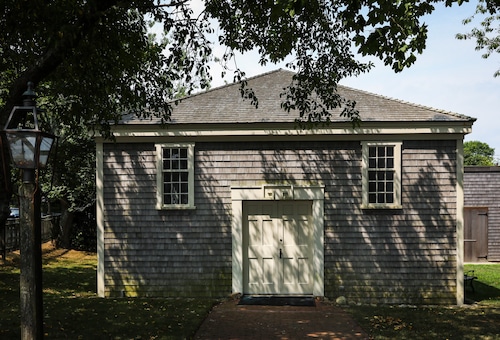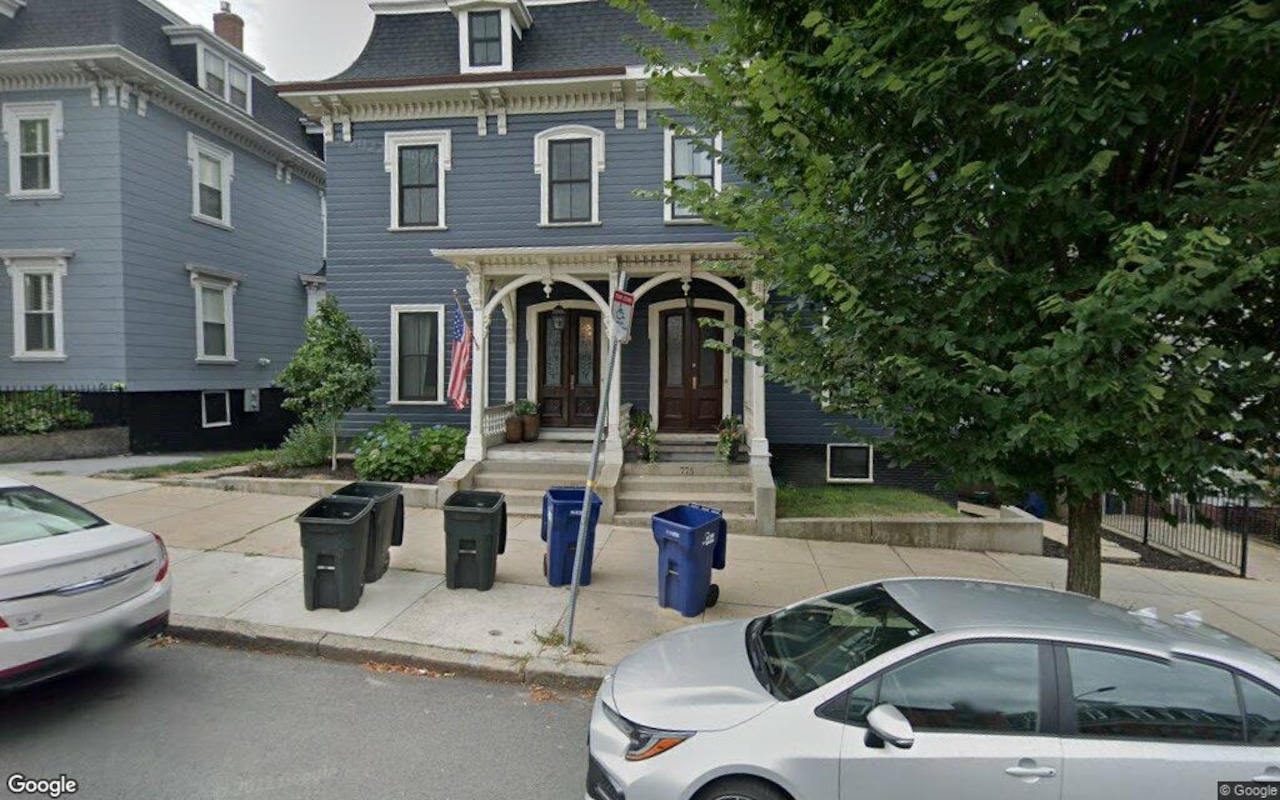Hundreds of students from Nantucket crossed the stage Friday, wearing caps and gowns to celebrate their graduation. But, before Nantucket High School seniors received their diplomas, one student, who the town deprived of an education, finally got her own.
Eunice Ross, an African American teenager who was integral in Massachusetts’ school integration movement in the mid-1800s, was awarded a posthumous honorary diploma on Friday, nearly two centuries after Nantucket denied her a right to an equal education.
In 1839, Ross, 17, became the first Black person to pass the Nantucket High School entrance exam, but a year later, the town denied her admission because of her race. Still seeking an education, Ross fought against segregationists for her right to attend high school, which led to the first law in the United States guaranteeing all Massachusetts children an equal education.
Ross’ posthumous honorary diploma comes near the 70th anniversary of Brown v. Board of Education (May 17, 1954), the landmark U.S. Supreme Court decision that ruled segregating students in public schools based on race is unconstitutional.
The diploma was awarded to Ross by the Nantucket Historical Association in partnership with Nantucket Public Schools, the Museum of African American History in Boston and Nantucket, and the town of Nantucket.
Elizabeth Hallet, superintendent of Nantucket Public Schools, said she started discussions with the Nantucket Historical Association to present Ross with a posthumous honorary diploma last year.
“This just kind of celebrates Eunice Ross’ impact on our community because she has an important historical significance on Nantucket,” she said. “By doing so, we can also acknowledge our commitment toward educational equity and justice in our schools.”
Noelle Trent, the president and CEO of the Museum of African American History, said that awarding Ross her diploma was about acknowledging a wrong and her lifetime of work.
“Much of the progress that we see in our education systems today is because this teenager had the audacity to stand up and say ‘this isn’t right, I’ve done the work, I qualify. Others can go in and receive their education, why can’t I?’” she told MassLive.
Race divided Nantucket at the time, and schools, like in the rest of the United States, were segregated, according to Barbara A. White, author of “Line in the Sand: The Battle to Integrate Nantucket Public Schools.”

The African Meeting House on Nantucket on Aug. 13, 2020. The building was used as a one-room schoolhouse for African American children in the 1800s until island schools were integrated in the mid-1800s. (Photo by Erin Clark/The Boston Globe via Getty Images)(Photo by Erin Clark/The Boston Globe via Getty Images)
In 1789, Massachusetts required all towns to provide public schools for all children, according to the Nantucket Historical Association. But, Nantucket was resistant to complying with state law.
“The town dragged its feet, on sadly, in public schools for white kids and Black kids who didn’t have the money,” White said. “I don’t think that they saw public schooling as necessarily something for the lower classes.”
Families on Nantucket that could afford it sent their children to Cent Schools, she said, which cost a penny a day.
It took the advocacy of Samuel Jenks, then-editor of the Nantucket Inquirer, and his cousin-in-law Cyrus Peirce to get Nantucket to invest in public schools, according to the Nantucket Historical Association. Jenks and Pierce filed a complaint to the state’s Attorney General Perez Morton claiming that Nantucket was violating state law. An indictment was brought against the town and state lawmakers instituted fines against municipalities for noncompliance.
Backed into a corner, Nantucket eventually decided to open up its first fully funded public elementary schools in 1827, according to the Nantucket Historical Association. They included the African School, a one-room segregated schoolhouse inside the African Meeting House in New Guinea, an area on the island heavily populated by African Americans. By 1838, the town had built its first public high school.
Nantucket’s decision in 1840 to deny Ross a high school education was a catalyst for the island’s school integration movement, White said. The island’s Black community had taken up her cause, putting forward motion after motion at town meetings to integrate Nantucket’s schools.
For some time the integrationists’ efforts were thwarted by William Starbuck, a segregationist who sat on the Nantucket School Committee, according to the Nantucket Historical Association. Starbuck filed counter motions against school integration, claiming that “the African School be continued as heretofore” and tried to persuade the town residents to support his side during a town meeting in 1843.
But at that meeting, the integrationists had procured enough support among school committee members to integrate the town’s schools, triggering a five-day Special Town Meeting in March, according to the Nantucket Historical Association. The school committee integrationists eventually won their battle and proceeded to integrate the schools, against the town leaders’ wishes.
In that year, the African School was renamed York Street School and became open to all children, regardless of skin color, according to the historical association. By September, 51 children had enrolled at York Street, and 15 Black students were placed in two other grammar schools.
But the integration didn’t last long. The following year in 1844, abolitionists were voted off the school committee and replaced by segregationists looking to re-segregate the schools.
Black students were “painfully, horrifically rejected and ejected from those two grammar schools in front of their class space, called to the front of the classroom and escorted out of the [grammar] schools,” White said.
Rather than send their children back to York Street, the island’s African American community, along with some white families, decided to boycott the school, making it one of the earliest boycotts in American history, according to White. While the boycott took place, the community developed makeshift schools to teach children.
During the boycott — from 1844 to 1845 — African Americans petitioned the state Legislature for their rights to an equal education. The first petition sent to the State House, written by Edward J. Pompey and 104 “others,” was signed by both children and adults in January 1845, according to White. Pompey and the signatories wrote that between 30 and 40 children on Nantucket were being denied their right to an equal education.
White said two more petitions in support of Pompey’s allegations followed, along with two opposing petitions. But, the final petition, written by Ross in February 1845, was where she told her story.
“The undersigned has good reason to feel on this subject as she was examined in 1840 by the school committee and found amply qualified for admission into the high school at Nantucket and was refused admittance by a vote of the town, instructing the school committee, not to admit her on account of her color,” she wrote.
In 1845, the Massachusetts Legislature passed Chapter 214 of the Acts of 1845, which guaranteed all children in the commonwealth a right to an equal education, according to White.
Still, Nantucket ignored this law. It wasn’t until Captain Absalom F. Boston, the first African American whaling captain, filed a lawsuit on behalf of his daughter Pheobe, who was also denied an equal education, that Nantucket complied with the state law, White said.
The suit was dropped shortly after, White said, “and we never looked back after that, it was integrated from then on.”
There is no evidence to show whether Ross attended Nantucket High School. White thinks she either didn’t enroll due to her age — she would’ve been in her twenties at the time — or because “she was traumatized” from the public discourse around her denial.
She later settled in Newtown, formerly referred to as New Guinea, where she spent the rest of her life until she died in 1895 at 72. She is buried at the Historic Coloured Cemetery on Nantucket.





